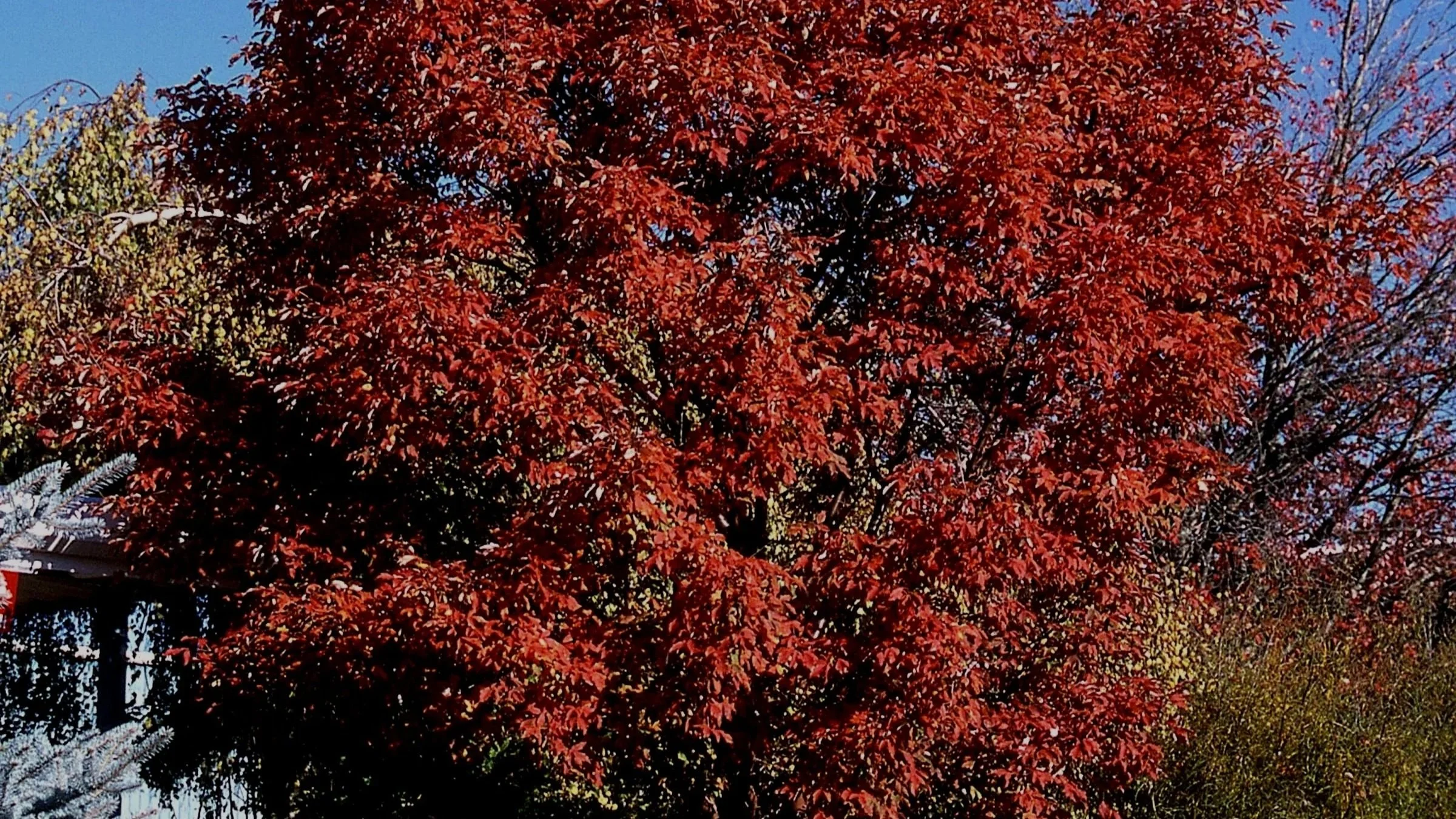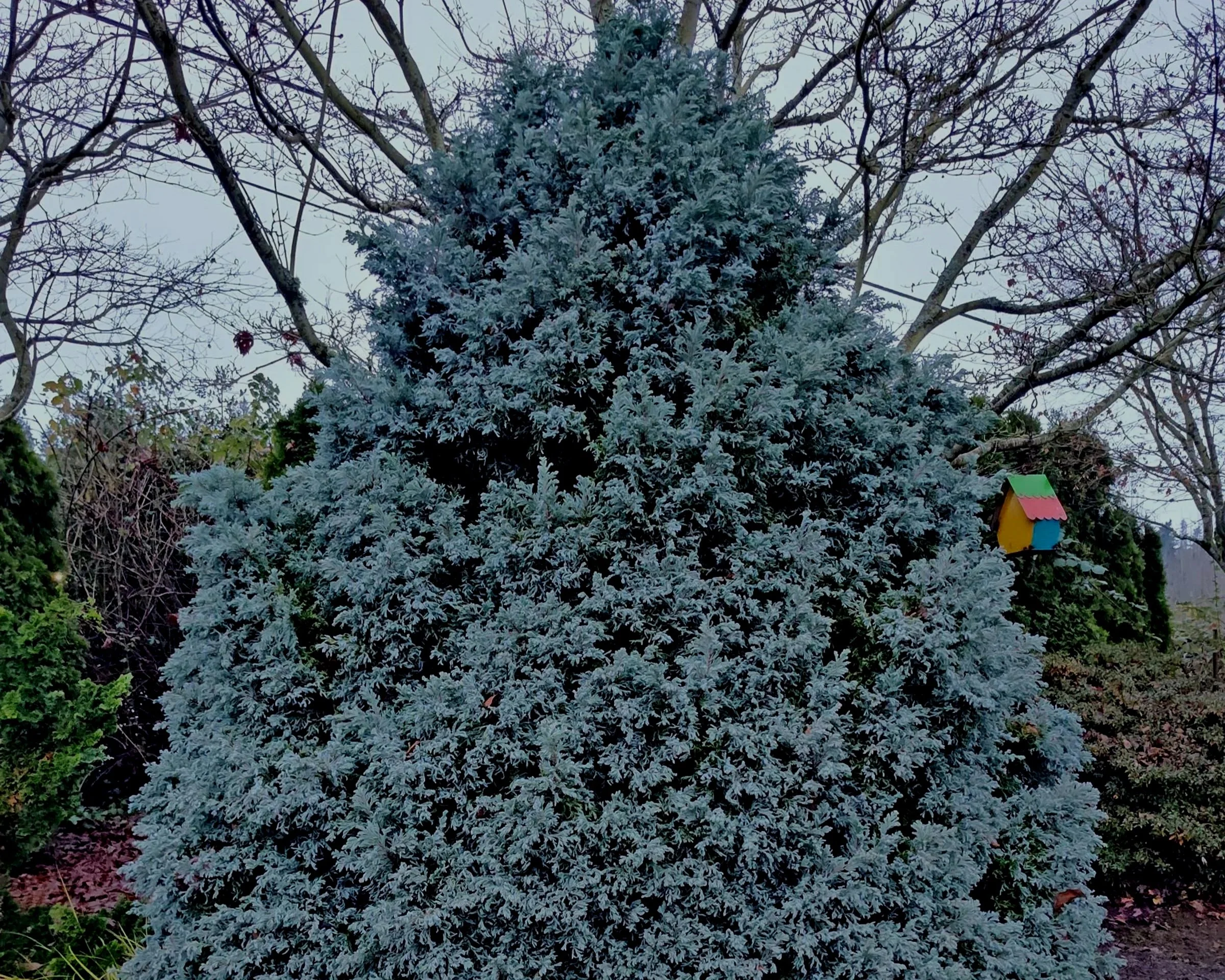Fall is in full swing and as promised, I am going to continue to hug some trees and mention even more lovely examples for fall color. The “Trilogy of Trees” (as I am calling it) marches on to the beat of autumn, and what a lovely season it is turning out to be! The trees for today should be appreciated for both their outstanding fall foliage and added bark interest. With the season of the sticks (winter) on the horizon, peeling and/or colorful bark makes quite a statement in the garden, especially when exhibited on a tall, stately landscape tree. Think of these as the ultimate focal point(s) in any garden, as they are sure to draw attention all year long.
I thought I would throw something else out there for your consideration, as I think it ties in perfectly with our discussion… Many species that we think of as “trees” can be found as traditional, single trunk specimens, and there is of course nothing wrong with that. But I might suggest seeking out what we call “multi-stem” or “clump form” specimens – the same exact plant grown with more than one trunk. A grower will simply crop a single stem tree when young, or plant multiple seedlings in a group, creating a kind of grove look. Many native plants to us, like Vine Maple for example, naturally grow like this. Perhaps you are familiar with a clumping or multi-stem Birch. The point is simply this, your “tree” does not have to be a traditional tree, it can have the same impact and thrive in the garden just as well grown in clump or multi-stem form. Sometimes this may look a little more natural (or native if you will) and matures into maybe a bit wider and not quite as tall specimen long term. These, just like single trunk options, can easily be limbed up over time to create lovely garden space underneath them for more planting areas.
The species I describe below are all perfect for our specific climate and should offer any plant enthusiast some options to match their specific style. I invite you to explore these selections and see what might work well in your very own gardening oasis.
River Birch (Betula nigra): River-type Birch make outstanding garden specimens, adding some serious winter interest. The exfoliating bark on these gets better and better with age, displaying colors like cream, tan, and a subtle touch of salmon pink. River Birch is very tolerant of poor soil, bad drainage and heavy clay, making them even more useful in our neck of the woods. Give these a wide birth as they grow rapidly and can mature upwards of 50-feet tall and 30-feet wide in optimal conditions. Clean green foliage turns to a nice golden-yellow in the fall. Planting the cultivar ‘Heritage’ adds in superior resistance to Birch Borers as well.
Royal Frost Birch (Betula x hybrid): This underused variety of Birch is a hybrid type and displays lovely purplish foliage from spring to fall, turning a brilliant yellow-orange to red in fall. These also display beautiful white bark for winter interest. Give them some room as these will grow more quickly and mature into strong specimens about 40-feet tall and 25-feet wide. Heavier soils and less than ideal drainage are not much of an issue with these, and they also exhibit excellent resistance to Japanese Beetles and Birch Borers.
Japanese Stewartia (Stewartia pseudocamellia): Stewartia trees of any kind are amongst my favorite trees, especially in fall. These are truly a tree for all seasons – clean green spring foliage, striking white summer flowers, some of the brightest orangey-red fall color of any plant, and sweet exfoliating bark for winter. Japanese Stewartia grows large, reaching 40-feet tall and 20-feet wide over time. Sometimes a smaller flavor is needed, enter in the Korean Stewartia (Stewartia koreana), with all the same attributes in a smaller package of 20-feet tall and 15-feet wide. Tall Stewartia (Stewartia monadelpha) is also worth noting, maturing to maybe 30-feet tall but only 15-feet wide (a little wider in multi-stem form though). I can promise you this, older specimens of these are some of the showiest plants in any landscape, all year long!
Paperbark Maple (Acer griseum): I know that I discussed great maples for fall in part one of our trilogy, but this specie deserves mention on its own. Paperbark-type maples have unique foliage, different than what you think of as maple. They boast electric red-orange fall foliage and peeling coppery-tan bar, which adds some serious winter interest. For maples, these are very manageable in size, typically maturing to about 25-feet tall and 10-feet wide with a rounded crown. Perhaps a more modern flavor like ‘Copper Rocket’ or ‘Fireburst’ can work even better for your small garden space, both with a more refined columnar shape.
Pacific Fire Vine Maple (Acer circinatum cvs): There is nothing wrong with our native Vine Maples and their typical multi-stem habit and gorgeous fall colors. But perhaps you want to add some bark color to your landscape? Grown ideally in morning sun or as an understory tree, ‘Pacific Fire’ glows with yellow to coral to orange bark of the winter, a nice bonus on a PNW native.
Crape Myrtle (Lagerstroemia cvs.): I have talked Crape Myrtles before, and as a friendly reminder, these plants provide excellent fall color and exquisite bark interest over winter. There are lots of options here, from dwarfs (only 5-feet tall) to larger growers in the 10 or 15-foot tall range. Not huge trees, so very manageable landscape size, and they display brilliant late summer flowers. This is one example of multi-stem only – they look much better grown this way to me versus any single stem form.
Witchhazel (Hamamelis x intermedia): This is one of my favorite landscape trees in my own landscape that I planted years ago. I always lean gardeners towards the variety ‘Arnold Promise’ myself, as it a little smaller (maybe 15-feet full grown) and sports fragrant yellow winter flowers. The foliage in fall is simply stunning as well, a mix of almost every color in the rainbow. Another perfect example of an ideal plant grown in multi-stem form.
Seven Sons Flower (Heptacodium micinoides): These may not be quite as known or popular around here, but trust me, they are worthy of consideration. Manageable size (15-feet tall by 10-feet wide), fragrant summer white flowers followed by bright red bracts and exfoliating tan bark, making Heptacodium most useful indeed. These need good drainage and mostly sun, allowing them to then light up your yard with fragrant color in August and September.
Fall is simply spectacular in the Pacific Northwest. Get out and enjoy the colors of autumn, both in our native lands and in your very own landscape. Consider adding some new trees for fall and winter interest, and don’t be afraid to flex your style. A visit to your local garden center can help show you some options, and speaking with a Certified Professional Horticulturist will you help explore the right specimens for the landscape. Up your game with fall color, add in some interesting barks and you will surely be the envy of the neighborhood.
Remember, leaves up and roots down…



